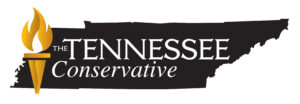Tennessee Added 75K Jobs Over Past Year
Image Credit: pxhere / Public Domain
The Center Square [By Jon Styf] –
Tennessee added 75,000 jobs over the past year, according to the state’s most recent employment report.
The largest number of those jobs came in the education and health services category with leisure and hospitality ranking second and government jobs ranking third.

Tennessee maintained a 3.3% unemployment rate in May, which is just higher than the 3.2% record-low number from May 2022.
The state added 2,700 jobs in the last month alone with health care and social assistance as the top category, followed by arts, entertainment and recreation and local government jobs.
The overall U.S. seasonally adjusted unemployment rate sits at 3.7%, up from 3.4% in April and 3.6% in May 2022.
In a WalletHub report, Tennessee ranked 34th amongst states based upon the unemployment rate changes.

New Hampshire, South Dakota, Vermont and Nebraska ranked atop the list. Nevada, the District of Columbia, California and Texas were at the bottom.
Nebraska, South Dakota and New Hampshire have the country’s lowest unemployment rates at 1.9%. Nevada is at 5.4%, the highest rate.
Sean Walker, a professor at the College of Business and Global Affairs at the University of Tennessee-Martin, said he believes the job market in 2023 will be determined by inflation, the upcoming election, state and federal regulations changes and the pace of a shift to automation.
“I believe, for the short-term, we will continue to see a push for a higher minimum wage at the organization level, a push for more paid leave, a continued trend of households moving to 1-income, as opposed to 2, and automation to continue to increase, especially in non-traditional industries such as teaching, data analytics, and healthcare,” Martin told WalletHub.

Martin said state and local authorities can make a large difference in how states recover from high inflation.
“A proactive approach requires anticipation of what is to come while a reactive approach deals with the outcomes of current inflationary increases,” Martin said. “Since inflation has been steadily increasing for 12-24 months now, but could continue to increase, I believe a proactively reactive approach is most plausible. In other words, begin to anticipate what inflation will do moving forward and then strategize how to respond.”

About the Author: Jon Styf, The Center Square Staff Reporter – Jon Styf is an award-winning editor and reporter who has worked in Illinois, Texas, Wisconsin, Florida and Michigan in local newsrooms over the past 20 years, working for Shaw Media, Hearst and several other companies. Follow Jon on Twitter @JonStyf.



